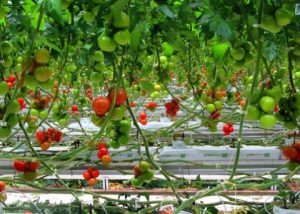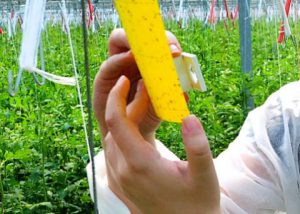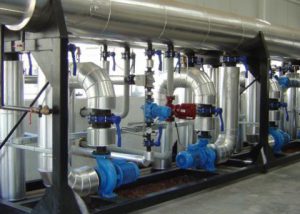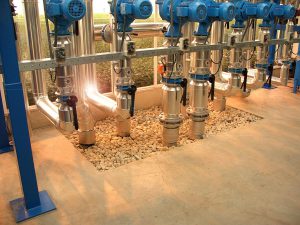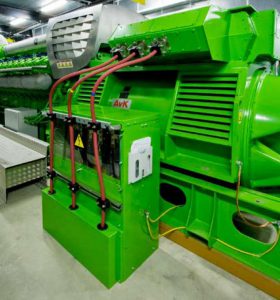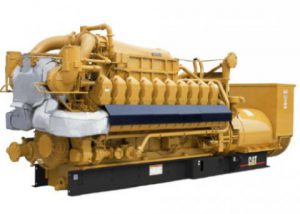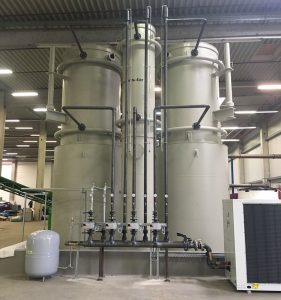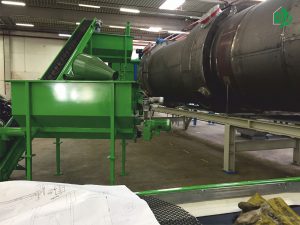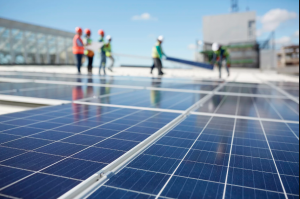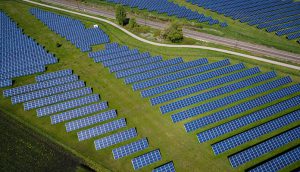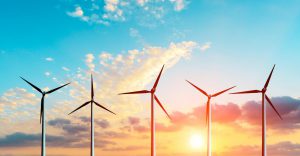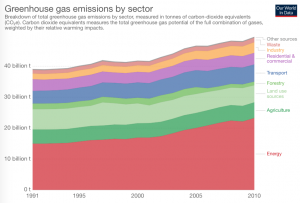Greenhouse Technologies
Hydroponics
We use advanced cultivation techniques which are utilized in each project to ensure increasing product quality, high yield, and low cost, enabling high margins and sustainability.
By the term hydroponics we mean that plant’s cultivation is done in any medium other than soil or soil mixes.
There are two basic categories of hydroponic cultivations. These are made up in water (NFT) and those made on inert substrates (rockwool, perlite, etc.), which does not provide any nutrients to plants and for this reason all the nutrients needed by the cultivation granted in the form of nutrient solution.
The hydroponic systems are divided into closed, where the nutrient solution is recycled, and in open, where the amount of nutrient solution that excess the irrigation (about 10-15%) is lost to the ground.
Nowadays, hydroponics attracts more growers than ever, with benefits to the consumer, the farmer and the environment.
In the last few years major changes have been achieved in the greenhouses industry. Hydroponic methods in horticulture and floriculture have now reached a stage of maturity and have proven over time that advocated 20 years ago:
• They produce delicious, aromatic vegetables and impressive floriculture products
• They have improved the yields / square meter
• They have reduced the use of water and nutrients
• They have facilitated the production of the different cultivation procedures
• The employees enjoy a cleaner working environment
• The consumers have recognized the value of hydroponic products paying premium prices.
Integrated Pest Control
The principles of Integrated Crop Management are applied, aiming to prevent insect introduction into the greenhouse and disease infestation on the crop. The result is to produce pesticide free fresh agricultural products of excellent quality and high nutritional value, regarding the hygiene and safety of in-house personnel.
To succeed this goal, a crop protection model has been developed, based on:
• Maintaining of a negative environment for disease development by fully controlling of greenhouse climate (temperature, humidity, ventilation etc).
• Installation of insect nets in all greenhouse windows, in order to inhibit insect’s introduction into the greenhouse
• Systematic control of personnel and visitors hygiene (clothing, shoes disinfection, etc) targeting to eliminate disease contamination.
• Systematic control of weeds around the greenhouse
• Installation of insect traps into the greenhouse aiming to monitor harmful insect populations
• Daily scouting of plants’ sanitary conditions by trained personnel, securing prompt reaction and minimum disease spreading
• Beneficial insects release aiming to maintain a balanced population with insect pests in order to minimize chemical treatments.
The result is to produce pesticide free fresh agricultural products of excellent quality and high nutritional value, regarding the hygiene and safety of in-house personnel.
Controlled Environment
We promote controlled environment agriculture practices for the creation of local high tech greenhouse farming industry.
For a successful horticultural project with the maximum production of the highest quality you need the best systems made today. Green Alliance has an excellent experience in system design and manufacturing. All of our greenhouse heating systems are fully integrated in the overall design. This guarantees maximum efficiency and lower (energy) costs.
The heating system must run economically and provide a uniform temperature to ensure optimum growth. Our fully integrated heating systems take care of an even distribution of temperature across the entire surface of the greenhouse. It needs to be adjusted to the local conditions. In some places it maybe necessary to choose for tubular heating while in other places hot air heating will be sufficient. We have all the experience in making the right choices.
In a greenhouse the climatical conditions are regulated and fine-tuned by computers. In addition Green Alliance also designs and integrates the equipment that is necessary for efficient operation. This involves a wide range of electronic systems, ranging from electronic equipment that simplifies the harvesting and transportation of the products, to systems that record the growth process.
The water is valuable. Our irrigation systems are especially designed to make sure that all water is optimally distributed and can be re-used. State-of-the-art equipment carefully checks
and controls the entire process and assures that every plant gets the exact amount of water and fertilizers it needs.
CO2 Feeding
It is well known that all plants uptake the nutrients required for their growth by the ground throughout their roots, apart from CO2, which is absorbed throughout air, providing the carbon (C) needed to grow and develop fruits. When plants are grown in a greenhouse, the planting density is quite high and the carbon provided by the atmosphere is not sufficient for high fruit production. The processed CO2 is channelled into the greenhouse, through a special pipe network, enriching the space that plants are grown with the desired concentration of CO2.
Irrigation Solutions
Water is valuable and good water management is a precondition for a successful crop. Our irrigation systems are especially designed to make sure that all water is optimally distributed and can be re-used. State-of-the-art equipment carefully checks and controls the entire process and assures that every plant gets the exact amount of water and fertilizers it needs. Controlled and focused irrigation is essential for healthy growth and the strong development of the crop, and also limits consumption of energy, water and fertilizers.
Energy Technologies
CHP - Combined Heat and Power
Co-generation Heat and Power (CHP) is the procedure of producing more than one products by a single operation: Burn Natural Gas for producing Heat, Power, cold water and CO2.
The parts of installation are:
• Engine set
• Boiler
• ECO2 PRO system
• Heat storage tank
• Heat exchanger
• Greenhouse
• Absorption Chiller
• Cooling tower
• Heat destroyer
• Cold store, packing area
• Cold, hot manifold
The CHP Unit is constantly monitored via telephonic link. Each incident is reported by the CHP itself to the Remote Service Desk
based in Horsham. Furthermore, some basic operations could be
realised remotely from the Service Desk to manage the CHP: Stop/Restart operations, change alarm levels.
Biomass & Waste to Fuel
We are one of the few pioneers that use waste heat as the source of energy for the heating installations of greenhouses. The result: a huge reduction in energy costs and less harm to the environment.
Biomass to Fuel conversion is a process for the reduction of complex organic materials into light synthetic diesel. It mimics the natural geological processes thought to be involved in the production of fossil fuels. Under pressure and heat, long chain polymers of hydrogen, oxygen, and carbon decompose into short-chain petroleum hydrocarbons with a maximum length of around 18 carbons.
The efficiency is regarding to the low reaction temperature (250 285°C), and high conversion rates (about 80 % of the Hydrocarbons content of the input materials).
BM&L process advantages
• Converts raw materials with a cellulosic base, biomass or plastic and tires waste into Energy (fuels, electricity, thermal power) & useful byproducts such as natural fertilizers.
• Provides an inexpensive, reliable way to supplement the world’s declining energy supply
• It can be used on a higher scale in industrial projects with a large annual waste production.
• Low maintenance services and extended operational longevity
• Uses a combination of catalysts and temperature differences for each type of input. During BM&L process the C+H chemical combinations are being reconstructed into the type of required output, such as synthetic oil or bio-fuel as gasoline, diesel, or lubricants.
The process unit is very low maintenance, reliable and safe. Energy demand, heat and power, for processing is supplied by a combined heat and power (CHP) plant, consuming only about 10% of the diesel produced.
Solar PV
Photovoltaic systems (PV system) use solar panels to convert sunlight into electricity. A system is made up of one or more solar photovoltaic (PV) panels, a DC/AC power converter (inverter), a racking system that holds the solar panels, electrical interconnections, and mounting for other components. Optionally it may include a maximum power point tracker (MPPT), battery system and charger, solar tracker, energy management software, solar concentrators or other equipment. A small PV system may provide energy to a single user, or to an isolated device like a lamp or a weather instrument. Large grid-connected PV systems can provide the energy needed by many users. The electricity generated can be either stored, used directly (island/standalone plant), or fed into a large electricity grid powered by central generation plants (grid-connected/grid-tied plant), or combined with one or many domestic electricity generators to feed into a small grid (hybrid plant). Systems are generally designed in order to ensure the highest energy yield for a given investment.
Photovoltaic solar panel used by greenhouses can generate electricity without an adverse effect on the crops grown within, while additionally providing cooling in summer. The system is designed to exploit the annual oscillation – the variation in the height of the sun’s path across the sky over the course of the year. In theory, no solar radiation is compromised over winter, but surplus radiation can be diverted to electricity-generation during summer.
Wind Energy
Wind power is the conversion of wind energy into a useful form of energy, such as using: wind turbines to make electrical power, windmills for mechanical power, wind pumps for water pumping or drainage.
The wind facilities are used to provide electricity to isolated locations and utility companies increasingly buy surplus electricity.
Wind power, as an alternative to fossil fuels, is plentiful, renewable, widely distributed, clean, produces no greenhouse gas emissions during operation and uses little land. Any effects on the environment are generally less problematic than those from other power sources. 83 countries around the world are using wind power on a commercial basis. The monetary cost per unit of energy produced is similar to the cost for new coal and natural gas installations.
Power management techniques are having excess capacity storage, dispatchable backing supplies (usually natural gas), storage such as pumped-storage hydroelectricity, exporting and importing power to neighboring areas or reducing demand when wind production is low.
Environmental Technologies
Being respectful to the environment and relevant legislation is a major issue to the company, there are followed friendly environmental practices on crop and energy production, aiming to save resources and minimize emission of exhaust fumes.
• Exhaust fumes process and greenhouse enrichment with CO2
The exhaust fumes process units transforms CO to CO2, through the procedure of catalysis that is channeled into the greenhouse. As CO2 is the major carbon source for the plants to compose the carbohydrates required, enrichment of CO2 into the greenhouse is proved to be an excellent method for exhaust fumes elimination.
• Irrigation water recycling
Most of the greenhouse units that are following the hydroponic method of production are discarding drain water to the environment. We provide equipment with a closed irrigation system that collects drain water to be disinfected and reused. By using this system drain water discard is avoided and volume of water used is decreased.
• Rain water collection
The pluvial water coming from the greenhouse roof is collected through gutters into rain water collection basins where. This water is analyzed and used, if suitable, as a back up for the crop irrigation.
• Engine-oil recycling
All mineral oils used by engines are collected in special bins that are taken over by special mineral oil recycling company.
• Recycling
Plastic, paper refuse and other greenhouse waste coming from packaging or other supplies are collected in special bins and taken over by a recycling company.

